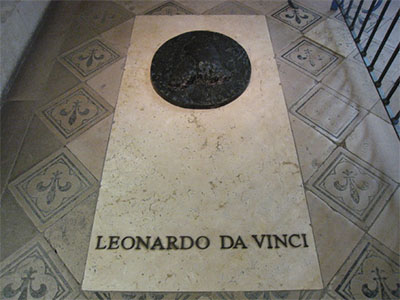The Life of Leonardo da Vinci
Vinci, Italy - 1452
Leonardo da Vinci was born on April 15, 1452, in the Tuscan hill town of Vinci in the Medici-ruled Republic of Florence. He was the illegitimate son of the wealthy Messer Piero Fruosino di Antonio da Vinci, a florentine legal notary, and Caterina a peasant. Leonardo has no last name in the modern sense "da Vinci" means "of Vinci". His full name was "Lionardo di ser Piero da Vinci", meaning "Leonardo, son of Messer Piero from Vinci."
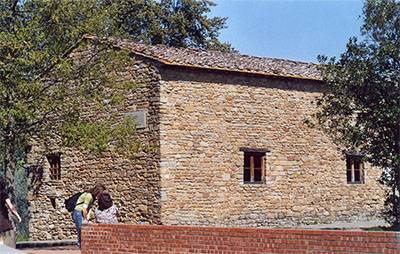
Florence, Italy - 1466-76
When Leonardo turned fourteen he was apprenticed to the artist Andrea di Cione, known as Verrocchio, whose work shop was "one of the finest in Florence." Leonardo learned about theoretical training and a vast amount of technical skills including drafting, chemistry, metallurgy, metal working, plaster casting, leather working, mechanics, and carpentry. He also learned the artistic skills of drawing, painting, sculpting, and modeling. By 1472, at the age of twenty, Leonardo was qualified as a master in the Guild of St Luke, a guild of artists and doctors of medicine. Leonardo's earliest known dated work is a drawing in pen and ink of the Arno valley, drawn on August 5, 1473.
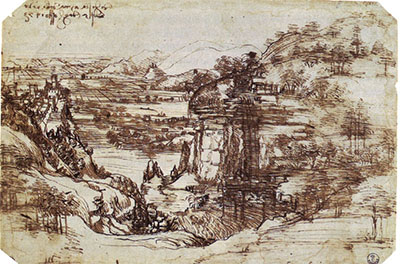
Milan, Italy - 1482-99
Leonardo was sent to Milan by Lorenzo de' Medici to secure peace with Ludovico Sforza, Duke of Milan. After arriving and securing peace Leonardo worked professionally in Milan from 1482 to 1499. He was commissioned to paint the "Virgin of the Rocks" for the Confraternity of the Immaculate Conception and "The Last Supper" for the monastery of Santa Maria delle Grazie.

Leonardo was employed on many different projects for Ludovico, including, preparation of floats and pageants for special occasions, designs for a dome for Milan Cathedral, and a model for a huge equestrian monument to Francesco Sforza, Ludovico's predecessor. Unfortunately the monument was never finished because it was destroyed during the Second Italian War, in which Leonardo served as a military architect and engineer devising ways to defend the city from naval attack.
Hungary - 1485
Leonardo traveld to Hungary on behalf of Ludovico to meet Matthias Corvinus, the King of Hungary and Croatia, for whom he is believed to have painted a Holy Family.
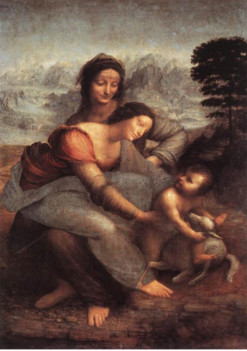
Cesena, Italy - 1502
In Cesena, in 1502 Leonardo entered the service of Cesare Borgia, the son of Pope Alexander VI, acting as a military architect and engineer traveling throughout Italy with his patron. In order to win Cesare's patronage Leonardo created a detailed map of Cesare's stronghold, the city of Imola. Leonard continued to serve Cesare Borgia until her returned to Florence in 1503.
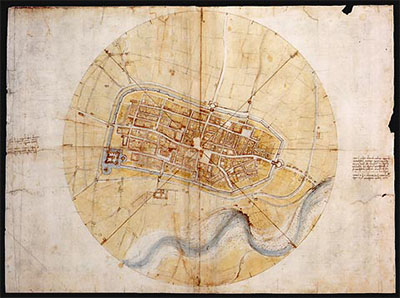
Florence, Italy - 1503-1505
Leonardo returned to Florence where he rejoined the Guild of St Luke on October 18, 1503, and spent two years designing and painting a mural of The Battle of Anghiari for the Signoria, with Michelangelo designing its companion piece, The Battle of Cascina. In Florence in 1504, he was part of a committee formed to relocate, against the artist's will, Michelangelo's statue of David.
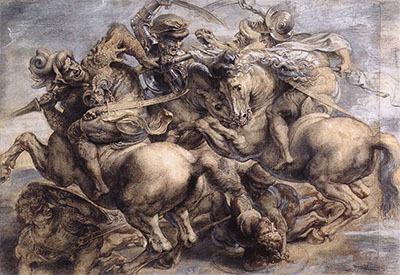
Milan, Italy - 1506-1512
In 1506 Leonardo returned to Milan where he worked with his pupils at his his own house in Porta Orientale in the parish of Santa Babila. Leonardo lived in Milan until 1512 when he moved to Rome.
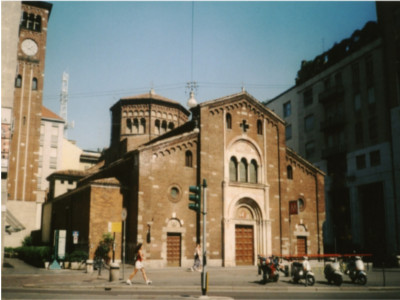
Rome, Italy - 1513-1516
From September 1513 to 1516, under Pope Leo X, Leonardo spent much of his time living in the Belvedere in the Vatican in Rome, where Raphael and Michelangelo were both active at the time. On December 19, Leonardo was present at the meeting of Francis I and Pope Leo X, which took place in Bologna. Leonardo was commissioned to make for Francis a mechanical lion which could walk forward, then open its chest to reveal a cluster of lilies. Unfortunately Leonardo was unable to finish this project before his death. In 1516, he entered François' service, being given the use of the manor house Clos Luce near the king's residence at the royal Chateau d'Amboise.
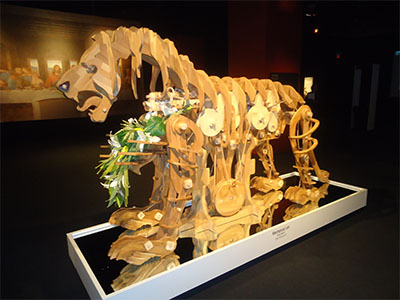
Clos Lucé, France - 1519
Leonardo died at Clos Luce, on May 2, 1519. In his last days, leonardo sent for a priest to make his confession and to receive the Holy Sacrament. In accordance with his will, sixty beggars followed his casket. Count Francesco Melzi was the principal heir and executor, receiving as well as money, Leonardo's paintings, tools, library and personal effects. Leonardo also remembered his other long-time pupil and companion, Salai and his servant Battista di Vilussis, who each received half of Leonardo's vineyards, his brothers who received land, and his serving woman who received a black cloak "of good stuff" with a fur edge. Leonardo da Vinci was buried in the Chapel of Saint-Hubert in Chateau d'Amboise, in France.
